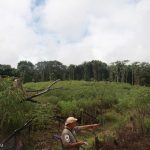How to increase REDD+ benefits to indigenous peoples and other traditional forest communities

To meet the target of limiting global warming to 2-degrees-Celsius established in the Paris Climate Agreement, it is crucial to curb tropical deforestation and encourage the reforestation of tropical forests that have already been cut down. Not only is tropical deforestation and forest degradation the source of 10 to 15 percent of global carbon dioxide emissions, but tropical forests are an invaluable carbon sink that play a huge role in regulating the global climate. It’s been noted many times before that indigenous peoples and other forest communities who act as guardians of the forest are important partners and allies in the world’s efforts to slow climate change. Empowering Indigenous and forest communities as official stewards of their territorial lands has great climate potential: indigenous peoples and traditional communities own or have designated use rights to about 18 percent of the world’s tropical forests, comprising more than 350 million hectares in 30 tropical nations. Indigenous territories alone account for more than 20 percent of tropical forest carbon stocks.

